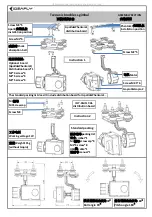
50
Mounting and Operating Instructions CEAG Battery Cabinets
40071860035 (N) March 2016 www.ceag.de
6 Installation
Fig. 1: Sprinter – Life utility versus temperature
Fig. 2: Marathon – Life utility versus temperature
6 Installation
6.1 Safety Notes
WARNING! RISK OF INJURY!
Improper mounting and installation can cause serious per-
sonal injury and / or material damage. This work must only
be performed by authorised, skilled and adequate personnel
who have received instructions providing information on the
device and in observance of the local safety regulations.
• Ensure there is enough free moving space.
• Ensure orderliness and cleanliness at the working place.
Loose tools lying arround are dangerous!
6.2 Battery rooms, Ventilation and General require-
ments
General: This is a guideline only and consists of abridgements
from national and international standards and guidelines.
See EN 50272-2 for further information. Also, observe “Ope-
rating Instructions” and “Installation Instructions”.
6.2.1 Temperature
• AGM-batteries are developed to be operated within a wide
temperature range -15°C and +55°C.
• The battery-room temperature should be b10°C
and +30°C.
• The optimum operating temperature is the nominal tem-
perature of 20°C.
• Higher temperatures reduce the lifetime. Above 40°C
there is a risk of „thermal runaway effects“.
• Lower temperatures reduce the available capacity and
prolong the recharge time.
• Below approx. -8°C there is a risk of freezing, depending
on the depth of discharge. On the other hand it is possible
to use the batteries at lower temperatures, under specific
conditions.
• The battery temperature effects the available capacity.
• The difference of temperature between the cells / mono-
blocs in one battery-line has to be under 5 °C (5 Kelvin).
Years
Years
Temperature in °C
Temperature in °C











































